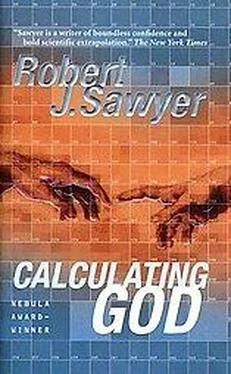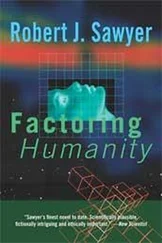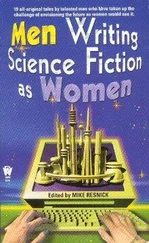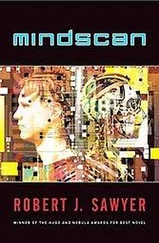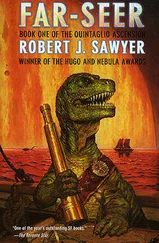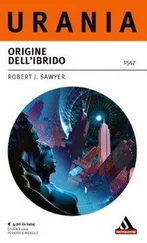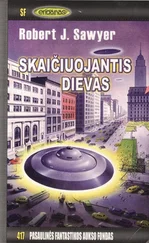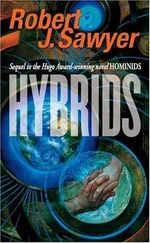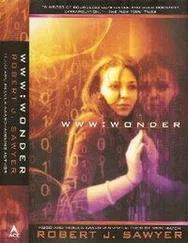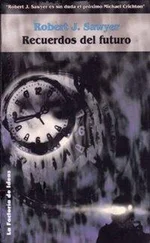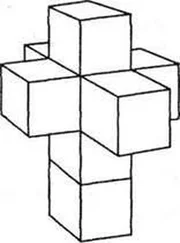Robert Sawyer - Calculating God
Здесь есть возможность читать онлайн «Robert Sawyer - Calculating God» весь текст электронной книги совершенно бесплатно (целиком полную версию без сокращений). В некоторых случаях можно слушать аудио, скачать через торрент в формате fb2 и присутствует краткое содержание. Город: New York, Год выпуска: 2000, Издательство: Tor Books, Жанр: Фантастика и фэнтези, на английском языке. Описание произведения, (предисловие) а так же отзывы посетителей доступны на портале библиотеки ЛибКат.
- Название:Calculating God
- Автор:
- Издательство:Tor Books
- Жанр:
- Год:2000
- Город:New York
- ISBN:нет данных
- Рейтинг книги:5 / 5. Голосов: 1
-
Избранное:Добавить в избранное
- Отзывы:
-
Ваша оценка:
- 100
- 1
- 2
- 3
- 4
- 5
Calculating God: краткое содержание, описание и аннотация
Предлагаем к чтению аннотацию, описание, краткое содержание или предисловие (зависит от того, что написал сам автор книги «Calculating God»). Если вы не нашли необходимую информацию о книге — напишите в комментариях, мы постараемся отыскать её.
Calculating God — читать онлайн бесплатно полную книгу (весь текст) целиком
Ниже представлен текст книги, разбитый по страницам. Система сохранения места последней прочитанной страницы, позволяет с удобством читать онлайн бесплатно книгу «Calculating God», без необходимости каждый раз заново искать на чём Вы остановились. Поставьте закладку, и сможете в любой момент перейти на страницу, на которой закончили чтение.
Интервал:
Закладка:
“Well, then, maybe they buried something else beneath those warning landscapes,” I said. “Something so dangerous, they wanted to make sure that it would never be uncovered, so that it could never come after them. Maybe the Cassiopeians were afraid if the vault was subducted, its walls would melt and whatever — whatever beast perhaps — they’d imprisoned within might escape. And then, all these races, even after burying whatever they were afraid of, left their homeworlds, putting as much distance as possible between themselves and whatever it was they’d left behind.”
“I’m thinking of going to church this Sunday,” Susan had said last October, shortly after our first appointment with Dr. Kohl.
We’d been sitting in our living room, me on the couch, she on the matching chair. I’d nodded. “You usually do.”
“I know, but — well, with everything that’s happened. With . . .”
“I’ll be all right,” I said.
“Are you sure?”
I nodded again. “You go to church every Sunday. That shouldn’t change. Dr. Kohl said we should try to keep our lives as normal as possible.”
I wasn’t sure what I’d do with the time — but I’d find plenty. At some point, I’d have to call my brother Bill in Vancouver and let him know what was happening. But Vancouver was three hours behind Toronto, and Bill didn’t get home from work until late. If I called in what was the early evening his time, I’d end up speaking to his new wife Marilyn — and she could talk your ear off. I wasn’t up for that. But Bill, and his kids from his previous marriage, were the only family I had; our parents had passed away a couple of years ago.
Susan was thinking; her lips were pursed. Her brown eyes briefly met mine, then looked at the floor. “You — you could come with me, if you want.”
I exhaled noisily. It had always been something of a sore point between us. Susan had gone to church regularly her whole life. She knew when she married me that that was not something I did. I spent my Sunday mornings surfing the web and watching This Week with Sam Donaldson and Cokie Roberts. I’d made it plain to her when we started dating that I wouldn’t be comfortable going to church. It would be too hypocritical, I said — an insult to those who believed.
Now, though, she clearly felt things had changed. Perhaps she expected me to want to pray, to want to make my peace with my maker.
“Maybe,” I said, but I’m sure we both knew it wasn’t going to happen.
It never rains but it pours.
Dealing with my cancer, of course, took a lot of my time. And Hollus’s visits were now taking up most of the rest of it. But I had other responsibilities, too. I’d arranged for the special exhibition at the ROM of fossils from the Burgess Shale, and although we’d had the grand opening months ago, I still had a lot of administrative work related to it.
Charles Walcott of the Smithsonian discovered the Burgess Shale fossils in 1909 in the Burgess Pass through British Columbia’s Rocky Mountains; he excavated there until 1917. Starting in 1975 and continuing for the next two decades, the ROM’s own Desmond Collins began an ongoing and extremely fruitful series of new Burgess Shale excavations, uncovering additional collecting fields and harvesting thousands of new specimens. In 1981, UNESCO named the Burgess Pass its eighty-sixth World Heritage site, in the same class as the pyramids of Egypt and the Grand Canyon.
The fossils date back to the middle Cambrian Period, 520 million years ago. The shale, which represents a mud slide from the Laurentian shelf that rapidly buried everything living on the sea floor, is so fine grained that it preserved impressions even of soft body parts. A huge diversity of lifeforms is recorded there, including many complex types that some paleontologists, including our own Jonesy, argue don’t fit into any modern group. They appeared, existed briefly, then died out, as if nature were trying out all sorts of different body plans to see which ones worked best.
Why had this “Cambrian explosion” of diversity occurred? Life had already existed on Earth for perhaps 3.5 billion years, but, during all that time, it had taken very simple forms. What had caused so much complexity, and so much variety, to suddenly appear?
Davidson and Cameron at CalTech and Peterson at UCLA have argued that the reason for the simplicity prior to the Cambrian explosion was, well, simple: until that time, fertilized cells were severely limited in the number of times they could divide; ten or so divisions seemed to be the maximum. And ten divisions yields just 1,024 cells, producing quite small, and quite unsophisticated, creatures.
But at the beginning of the Cambrian, that ten-division barrier was smashed by the development of a new type of cell, still seen in some living organisms; these cells could divide many more times and were used to define the morphological space — the fundamental body shape — of all sorts of new organisms. (Although Earth had been four billion years old when that happened, the same breakthrough — smashing the ten-division limit — apparently occurred on Hollus’s homeworld when it was just two billion years old; at that point life there also stopped spinning its wheels and started evolving in earnest.)
Earth’s Burgess Shale contains our direct ancestor Pikaia, the first animal with a notochord, from which the spinal column later evolved. Still, almost all the animal fossils from there are clearly invertebrates, and so a special exhibition of such fossils probably should have been organized by the ROM’s senior invertebrate paleontologist, Caleb Jones.
But Jonesy was set to retire in a few months — no one had yet remarked, to me at least, on the fact that the ROM was going to lose its two most senior paleontologists almost simultaneously — and I was the one who had the personal relationship with the people at the Smithsonian, where Walcott’s Burgess fossils had ended up before Canada had put laws in place protecting its antiquities. I also helped organize an ongoing series of public lectures to accompany the exhibition; most would be given by our own staff (including Jonesy), but we had also arranged for Stephen Jay Gould, whose book Wonderful Life is about the Burgess Shale fossils, to come up from Harvard and give a talk. The exhibition was proving to be a big moneymaker for the ROM; such shows always got us lots of free media coverage and so drew in the crowds.
I’d been excited about the exhibition when I’d first proposed it, and even more excited when it had been approved and the Smithsonian had come on board, agreeing to pool its fossils with ours for a joint show.
But now—
Now, with the cancer—
Now it was just an irritation, an inconvenience.
Yet another thing on my plate.
Yet another demand on my all-too-limited time.
Telling Ricky was the hardest.
You know, if I’d been like my dad — if I’d been content with a bachelor’s degree and a regular nine-to-five — things would have been different. I’d probably have fathered my first child in my early twenties — and so, by the time I was the age I am now, that child would be in his thirties, and maybe even have kids of his own.
But I wasn’t my dad.
I’d received my bachelor’s in 1968, when I was twenty-two.
And my master’s in 1970, when I was twenty-four.
And my Ph.D. when I was twenty-eight.
And then there was a postdoc at Berkeley.
And another at the University of Calgary.
And by that time I was thirty-four.
And making peanuts.
And, somehow, not meeting anyone.
And working late at the museum, night after night.
And then, before I knew it, I was forty and unmarried and without children.
Читать дальшеИнтервал:
Закладка:
Похожие книги на «Calculating God»
Представляем Вашему вниманию похожие книги на «Calculating God» списком для выбора. Мы отобрали схожую по названию и смыслу литературу в надежде предоставить читателям больше вариантов отыскать новые, интересные, ещё непрочитанные произведения.
Обсуждение, отзывы о книге «Calculating God» и просто собственные мнения читателей. Оставьте ваши комментарии, напишите, что Вы думаете о произведении, его смысле или главных героях. Укажите что конкретно понравилось, а что нет, и почему Вы так считаете.
